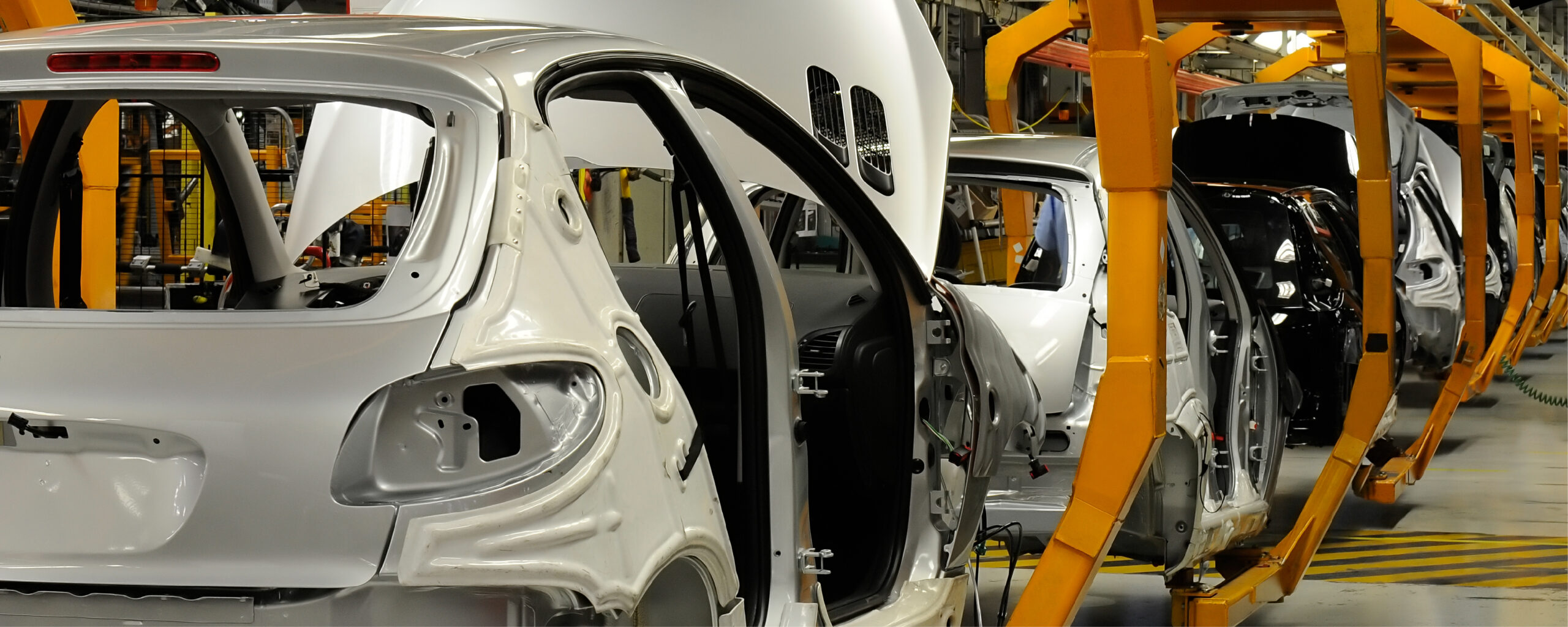Mobility Aid: Advancements in Wheelchairs
Over the past few decades, wheelchairs have made tremendous advances. The development of powered wheelchairs has been a tremendous accomplishment as it has substantially increased the mobility of people who are unlikely to have the cardiovascular strength or motor function for manual operation. Furthermore, the incorporation of digital technologies, 3D-printed components, and smart seating systems has completely redesigned the wheelchairs that are currently in use. Significant advancements have also been made in the handling, suspension, and auxiliary equipment of manual wheelchairs.
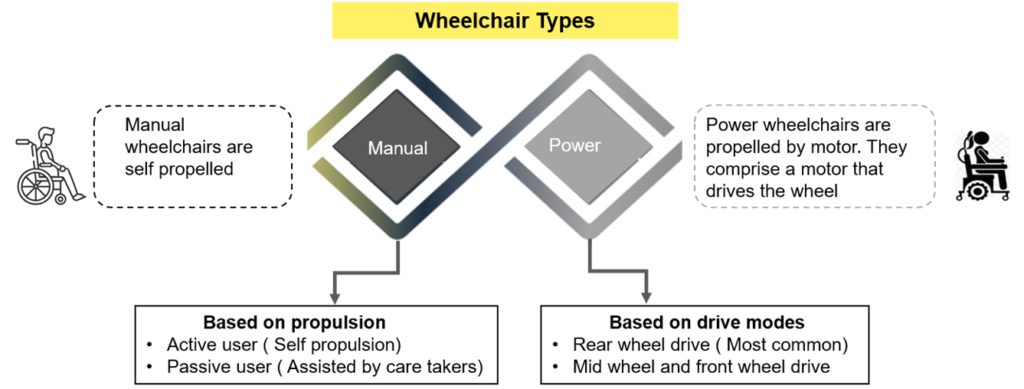
Recent Trends in Manual Wheelchairs
Manual wheelchairs have experienced several modifications, ranging from simple designs to extensive alterations over the years. The few recent trends that have been seen are emphasized here.
- Suspension system: Whole-body vibrations (WBV) are experienced by manual wheelchair users. It has been noted that these vibration impacts are being attenuated by new titanium suspension systems. Additionally, companies are now offering custom-built suspension systems.
- Power assist devices: These are extra parts for manual wheelchairs. With the help of a cycloidal reducer and power assist drive module, users can climb at a 20% steeper slope.
- Frame material: Wheelchairs made of carbon fiber composites have a reduced weight and more structural rigidity. These are crucial since the wheelchair’s weight and durability are determined by the frame material.
- Ultralight weight: Ultralight wheelchairs built on magnesium alloy platforms have been developed to improve user comfort and portability.
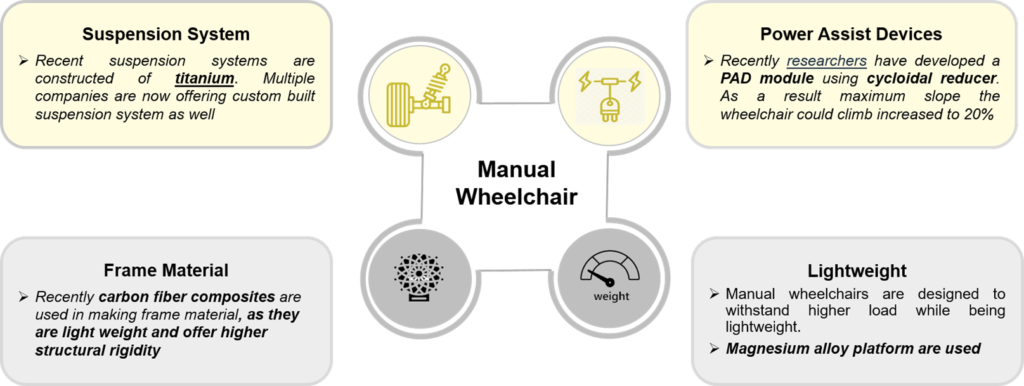
Recent Trends in Powered Wheelchairs
People without the motor function to operate a manual wheelchair are the target market for power wheelchairs. A powered wheelchair’s motors, drive control module, driving mechanism, and batteries are its essential and vital parts. Current trends include:
- Intelligent control systems: In order to improve movement and warn users of impending impediments, modern powered wheelchairs have integrated digital technologies and sophisticated sensors including infrared and 360-degree sensor vision.
- Autonomous driving: Recently, fully automated devices using cutting-edge AI algorithms have been made possible by autonomous navigation systems.
- Advanced controlling: Joystick operation is problematic for those with severe hand function restrictions, thus drive systems that use Google smart glasses for steering were developed. Moreover, through the use of tongue and head motions, alternative control techniques like MagTrack technology enable the user to do a multitude of difficult activities with a single controller.
- Extended battery life: Longer-lasting batteries are now available. For instance, Freedom One Life and Dassault Systems have created a motorized wheelchair that has a 40–80 km range on a single charge.
- Portable wheelchair: Lightweight, portable motorized wheelchairs have been designed to increase user comfort. A drive system for omni wheels is also included in some of the latest models.
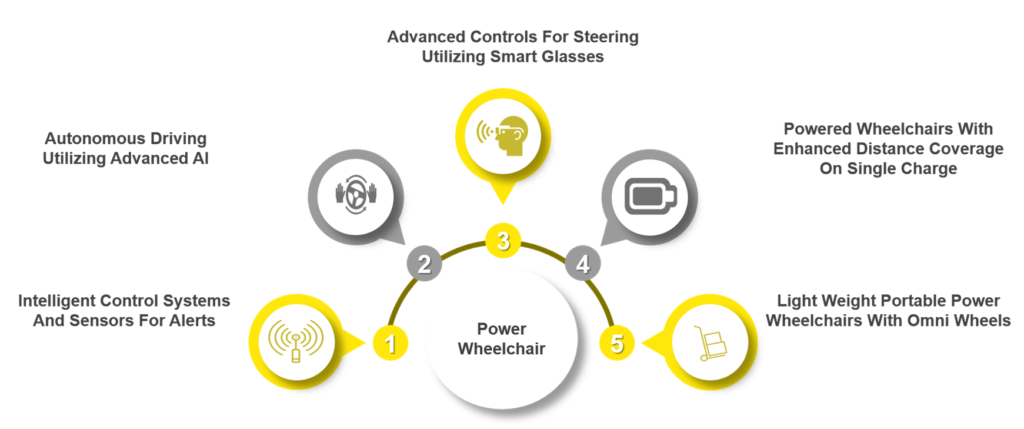
Advancements in Wheelchairs: Early Stage Innovations
Patients with very restricted hand movements are finding solutions to their difficulties thanks to early-stage inventions. Certain technologies concentrate on offering accessories to facilitate comfortable street navigation. A few recent early-stage inventions include:
Brain Control/ Mind Control:
- Designed for those with quadriplegia, ALS, and spinal cord injuries. An augmented reality and computer vision wheelchair prototype has been created by researchers at the National University of Defense in China.
- Deakin University and Control Bionics collaborated to develop DROVE based on an equivalent idea. This automatic technology leads customers through pre-planned paths while they are at home.
Step Climbing Attachments:
These let wheelchair users get around more easily, cross streets and ascend short staircases. A wheelchair-fitting add-on attachment prototype is being developed by researchers at UTS, Australia. A Swiss business called Scewo is also developing a power wheelchair with digital steering capabilities.
Smart Wheelchair:
YDLiDAR G2 and mapping systems are two of the many sensors that Alpharobotics is using to construct a smart wheelchair. In addition, the wheelchair has autonomous driving.
Futuristic Technology
South Korean-based startup, GuruIoT has developed a technology that converts digital twin maps into autonomous driving maps based on geospatial information. Also, the wheelchair can move through a crowded area or past physical barriers by slowing down, dodging obstructions, and stopping.
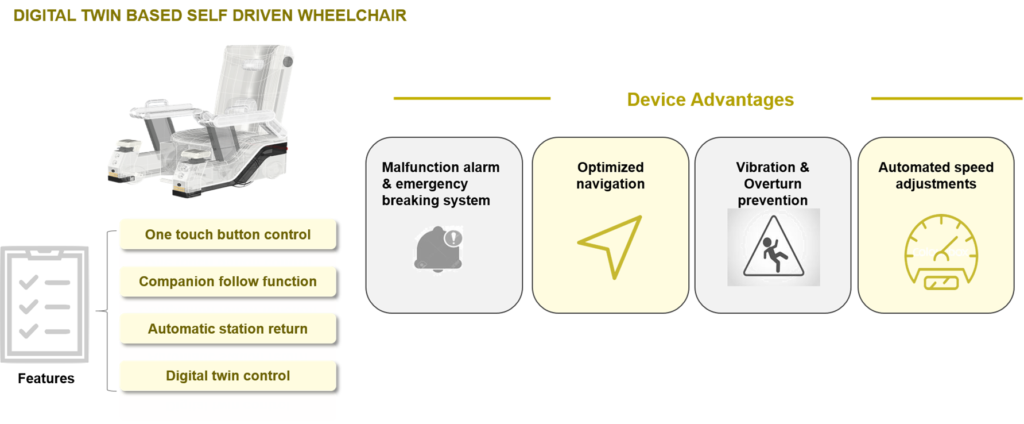
Wheelchair technology remains continuously improving. Moreover, these cutting-edge inventions and futuristic technology are just a few of the numerous developments reshaping the industry. Also, with their cutting-edge products, dominant players like Sunrise Medical, Permobil, and Meyera continue to shape the market.
It’s apparent that the integration of artificial intelligence, sensors, control systems, and cutting-edge safety measures is resulting in ground-breaking advancements. Also, the prospects for the future are enormous.

